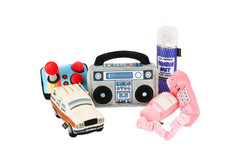Pet owners are often shocked when they realize their dog might have fleas. While most pet owners may take the time to regularly bathe their dogs and keep their homes clean, this doesn't limit a dog’s potential for picking up these parasites. If you think your dog may have fleas, check out these ways to tell and treat your pet.
Find Visible Fleas on the Dog’s Fur
Fleas aren’t very easy to find. One of the most effective ways to search for fleas is to use a flea comb. Just like finding lice in humans, these combs make finding fleas easier as the teeth of the combs are closer together—making it easier to catch the fleas before they scatter. Fleas tend to keep close to the skin rather than the outer ends of the fur, and if you look close, you may be able to see them as little black specks running around. If you see a flea, you can be sure there are more and that your dog needs immediate treatment.
Search for Flea Dirt
Flea “dirt” is feces left behind by fleas. These flecks of flea dirt also appear as black specks and can be collected when combing or brushing a dog. When placed on a paper towel, these specks will turn the paper a brown or reddish color. If your dog is scratching frequently, then checking for fleas and flea dirt will be an important step to determining the cause. If there are no signs of either, you’ll still want to take them to the vet in case there is a rash or infection causing irritation to your dog’s skin. Fleas and many other pests leave bites that turn red and irritated. Therefore, if your dog is free of fleas but is still itching at bug bites, you may have a pest problem in your home.
Treat Fleas with an Apple-Cider Vinegar Rinse
Vet visits can be hard to schedule for, and you don’t want to leave your dog with fleas for an entire weekend or longer. As an immediate first step solution, washing your dog with over-the-counter flea shampoos and then rinsing with apple-cider vinegar can get rid of at least most of fleas and give your dog some relief. While this all-natural bath isn’t a flea killer itself, the ACV makes for an unpleasant environment for fleas. The taste and smell of ACV are so off-putting to pests that they will make their escape following an ACV rinse. That being said, it is probably best to do this outside rather than in your house.
Go to the Vet
As a flea’s life cycle can last 21 days, it can be incredibly challenging to eliminate fleas on one’s own. This is why going to the vet is one of the most effective ways a dog lover can rid their four-legged friend of fleas. When it comes to treating fleas at the veterinarian, there are natural flea sprays and flea medications that work to rid dogs of these pests permanently. While most veterinarians don’t enjoy using chemicals unnecessarily, certain oral treatments are safer than conventional dips or sprays that have been used to treat dogs in the past. Going forward, special flea collars can help keep the fleas from returning and give your dog some extra protection.
Get a Flea Treatment for Your House
While pet owners can have their dog treated for fleas by a veterinarian, this won’t necessarily solve the problem of having fleas in the home. These flea control home remedies serve to eliminate all traces of fleas from the home, ensuring that fleas don’t jump back onto your dog when their treatment is through. Vacuuming and Insect Growth Regulators (chemicals used to prevent flea larvae from developing) are recommended for areas around the home where fleas may congregate. When working with a pest control professional, be sure to consult with them about what treatments will be safe to have in a home where the dog may get into the chemicals, and consider getting pest control recommendations from your vet as well.
Fleas are as pesky and infectious to dogs as lice are to humans, and unfortunately, they can spread to humans as well. Getting rid of these pests as soon as possible is essential both for your health and your dog’s. If you suspect you have an infestation, take immediate steps to take care of it so that you can prevent further damage.





